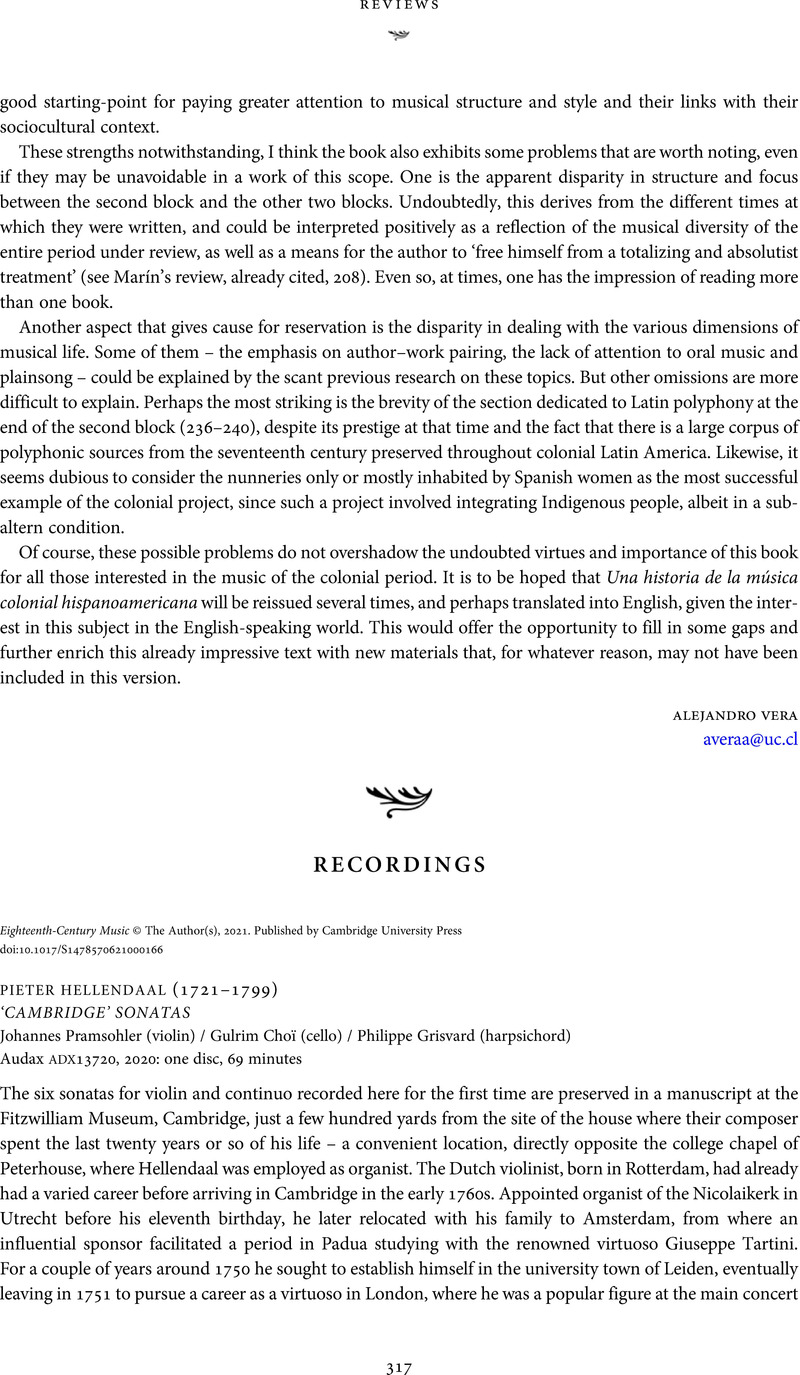No CrossRef data available.
Article contents
pieter hellendaal (1721–1799) ‘CAMBRIDGE’ SONATAS Johannes Pramsohler (violin) / Gulrim Choï (cello) / Philippe Grisvard (harpsichord) Audax adx13720, 2020: one disc, 69 minutes
Review products
pieter hellendaal (1721–1799) ‘CAMBRIDGE’ SONATAS Johannes Pramsohler (violin) / Gulrim Choï (cello) / Philippe Grisvard (harpsichord) Audax adx13720, 2020: one disc, 69 minutes
Published online by Cambridge University Press: 17 August 2021
Abstract
An abstract is not available for this content so a preview has been provided. Please use the Get access link above for information on how to access this content.

Information
- Type
- Review: Recording
- Information
- Copyright
- Copyright © The Author(s), 2021. Published by Cambridge University Press


